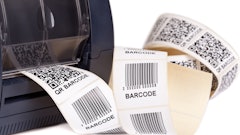
Supply chains are fluid by nature. They must be, given the complexities of global shipping. Every year, innovations emerge to help businesses further improve their shipping—be it via actionable AI, smart operations or mobile asset organization.
But, while innovation can be found throughout the supply chain, innovation in the dangerous goods (DG)/hazmat industry has remained lackluster at best. However, change is finally here. A transformative shift is underway as companies recognize the necessity for next-generation packaging that boosts efficiency, safety and sustainability.
The State of Hazmat Packaging
Dangerous goods are everywhere—from nail polish and pharmaceuticals to lithium batteries powering cell phones, power tools and electric vehicles.
The regulations governing their transport and storage are complex and constantly evolving, making staying up-to-date difficult. Making matters worse, the development or adoption of next-gen packaging hasn’t always kept up with the evolution of the hazmat supply chain.
Consider this: many organizations still use old-fashioned metal “paint cans” to ship flammable liquids. Even though they dent, leak and are a hassle to seal and open.
Multiple businesses also continue to use conventional cardboard boxes, which are flammable, to ship damaged lithium batteries. However, if a box’s contents ignite, the box won’t just fail to contain the fire, it will fuel it. That’s why most shipments of lithium batteries and battery-powered devices require gels, heavy liners or other fire-retardant fillers.
Roadblocks to Innovation
More innovative packaging has been needed in the hazmat industry for years. However, several barriers have kept it static.
- Adherence to Established Standards: Businesses are comfortable using traditional packaging with a history of safety and compliance. As a result, they stick with what’s familiar, even if it means missing out on the benefits available through new packaging solutions.
- Misperception of Packaging: Packaging is often viewed as just a “box.” So, it’s often overlooked in strategic planning, particularly during a new product development stage. This leads to overspending. It also leads to overlooking conventional solutions or even redesigning products that then can’t be moved safely and compliantly using existing packaging.
- Change Management: Implementing new solutions can be cumbersome. Consequently, businesses won’t change their packaging unless necessary, even if there are significant financial and operational benefits.
- Manpower & Prioritization: Lean staffing and customer demands have companies focused on getting product out the door. This deters them from looking into novel solutions that could streamline their operations.
Breaking Down Barriers
In the face of longstanding roadblocks to innovation, it’s thrilling to see progress. Several market trends and business needs have aligned to spur new and impactful hazmat solutions.
This is especially true when it comes to DG packaging solutions, including:
- Renewed Focus on Sustainability: Pick up a copy of any corporate sustainability report and you’ll immediately see the renewed focus on creating a more sustainable supply chain. Reusable and recyclable hazmat packaging helps support corporate sustainability goals by reducing environmental impact. It’s a change in business direction that investors can take to the bank.
- Process Optimization: Businesses always want to speed up fulfillment processes. But finding reasonably priced solutions to accomplish that can be tough. That’s where new, innovative packaging solutions that shorten filling, packing, and shipping times come into play. For instance, hazmat packaging solutions exist that can be opened and closed without needing tools. And they don’t require fillers or the mandate of certain levels of training or labeling. These types of advancements in packaging streamline shipping processes immensely.
- Cost Reduction: Adopting slimmer, lightweight materials can mitigate shipping costs and optimize warehouse space utilizations. Meanwhile, some modern packaging solutions have been engineered so the box itself provides adequate protection without the need for gel packs, heavy liners, pellets, or fillers.
The Business Returns of Innovative Hazmat Packaging
If the above innovations in hazmat shipping are appealing, the next steps you need to take aren’t difficult.
Ask “what if” and implement change. Of course, change can take multiple shapes. Whether it’s developing a completely new solution, doing a complete portfolio overhaul, assisting with product line implementation, defining our brand identity, or defining detailed performance standards, it all starts with a challenge. What will it cost and what will be gained?
Often, these changes yield multiple forms of ROI including: a sizeable money return, improved ergonomics, sustainability, newfound market identity, operational efficiencies and/or safety improvements.
How To Get Started Innovating Change for Your DG Business
An audit of existing practices is the first step to determining the changes your business needs to take to succeed. To do this right, find an experienced hazmat shipping partner that can provide consultation based on your business goals.
Your DG partner needs to understand the complexity of hazmat shipping and the impact new packaging can have on your operations. They can then support you throughout both the evaluation and change management process. But keep in mind, true strategic partners won’t just throw their solutions at you and move on. They’ll provide training and support to support a smooth transition and ensure compliance and confidence at every step of the way.
Whether project managing, testing, prototyping, training or customer support, having a team of experts to serve as an extension of your workforce will speed up your results. Because who says the box must be just a box? Make it part of your supply chain strategy and have it be a value-add to your business—not just a cost center.



















